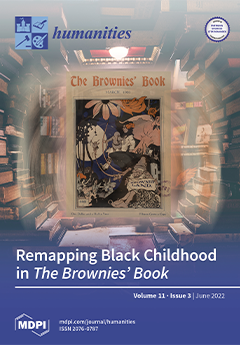We have come to a point where the field of fan studies must acknowledge darker, more pathologized and potentially more sinister forms of fandom than we have heretofore. Serial killer fandom is, simultaneously, one of the most visible and least-academically discussed form of
[...] Read more.
We have come to a point where the field of fan studies must acknowledge darker, more pathologized and potentially more sinister forms of fandom than we have heretofore. Serial killer fandom is, simultaneously, one of the most visible and least-academically discussed form of fandom, despite a general recognition that certain serial killers are, undeniably, celebrities. Serial killer fanfic is relatively rare, but it certainly exists. In this article, I build on some of the work I have already done on Real Person Fiction, specifically importing the lenses of metalepsis and multimodality as well as the self-conscious intersection between fiction and reality, to look at an example of serial killer fanfic on three platforms—Ao3, Tumblr and Wattpad. The article asks what we can learn from applying a fan studies approach to this phenomenon. Is there anything uniquely problematic about serial killer fanfiction, or is it the same process as what so many already do as a mainstream cultural practice, hypothesizing and imagining the ‘backstage’ of famous serial killers, as we do with all other celebrities? I compare the 2019 film
Extremely Wicked, Shockingly Evil and Vile which focuses on Bundy’s private relationship with his long-time girlfriend, his circus-like televised murder trial and his eventual death sentence, with a selection of Ted Bundy fanfiction. Of course, the film does not call itself fanfiction (though several critics have considered it to glorify its subject). I will argue that the distinction between ‘serial killer fanfiction’ and authorized, industrialized and popular forms of serial killer media, actually, has very little to do with the content of the text, and is based on a complex network of assumptions regarding its author, context and modes of production and reception. If this is so, the questions we should ask of serial killer fanfic are, in fact, much broader questions regarding our cultural fascination with serial killer media, challenging the pathologization of a specific, feminine-coded and extremely stigmatized fannish practice.
Full article





